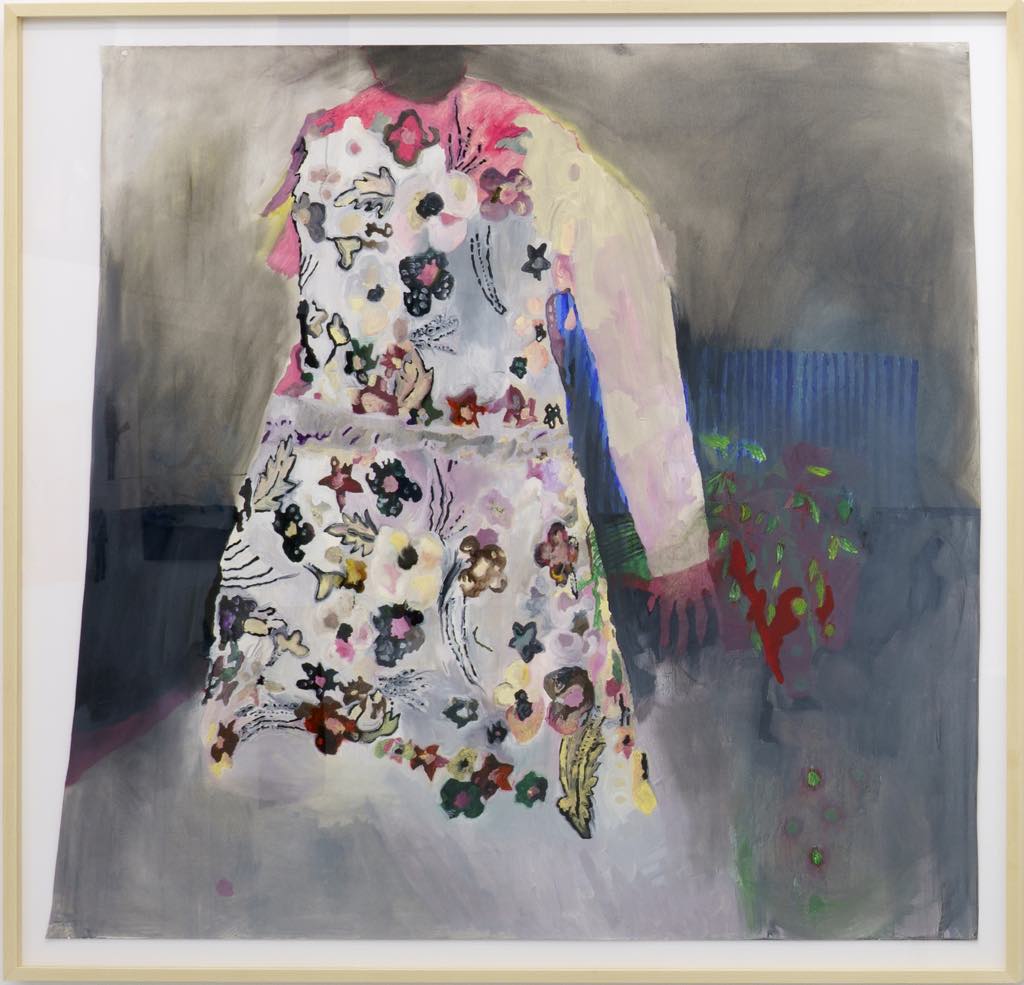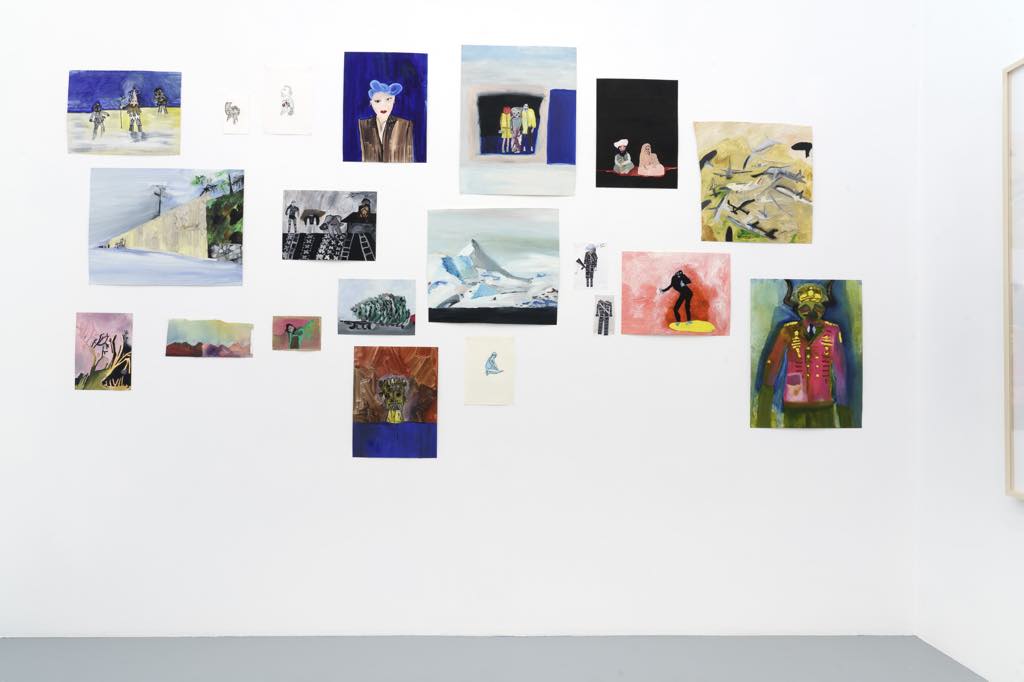
A small exhibition in a gallery hidden away in a courtyard in the Marais is garnering high praise from some of the powers-that-be in the Paris art world. At the opening, the head curator of a major contemporary art museum commented that it was one of the best shows she had seen in some time, while a bigwig in the French national museum system was overheard saying that one of the paintings was “a masterpiece.”
The exhibition, “La Beauté Sera CONVULSIVE,” at the Michel Rein gallery, showcases the work of Venezuelan artist Mariana Bunimov, who has lived in Paris for many years. The show’s title comes from the last line of André Breton’s book Nadja: “Beauty will be CONVULSIVE or will not be at all” (his caps).
There is indeed something convulsive about this collection of large and small oil paintings on paper – convulsive in the way that contemporary life is, with constant distractions taking us from one topic or activity to another, sometimes leading us far astray from our starting point and sometimes circling back again to where we began. That may explain the highly disparate subject matter and moods of the paintings.
On entering the first room of the exhibition, the visitor is confronted with a painting of a flowery dress, “Rodarte” (2017), seeming to float in space on its own. On closer inspection, however, you notice a hand sticking out of one sleeve and a headless neck suggesting a ghostly human inside. The prettiness of the bright, colorful garment is counterbalanced by the grays and blacks – and a splash of red – in the background, adding to the eerie impression the painting gives off.
The show’s curator, Àngeles Alonso Espinosa, sees this work as a sort of self-portrait, with a “luminous woman” standing out from the grim background, “dressed in light.”

A lovely still life of a bouquet of flowers expresses pure joy, but many of the paintings reveal a darker side, always tempered by humor or a kind of playfulness in the deceptively childlike execution. Bunimov’s concern with the political and economic situation in Venezuela crops up in images of demonstrations in the streets, for example, or in grotesque images of military men.
Nearby, however, is a depiction of a simple domestic scene: Bunimov’s daughter playing the piano, while another work shows a horizontal Christmas tree being transported on a flatbed truck, inspired by a picture found on the Internet.
Countering this impression of rapid image-hopping is the slow process of working with oil paint, notes Espinosa. She cites the French neuropsychiatrist Boris Cyrulnik, who sees slowness as helping to protect us from the “useless overstimulation of modern life.”
The seeming unrelatedness of Bunimov’s paintings might be disconcerting at first, used as we are to artists who work through one theme before moving on to another, but it is in itself stimulating, calling up the poet Lautréamont’s evocation of the beauty of “the chance encounter of a sewing machine and an umbrella on an operating table,” the phrase that so inspired the Surrealists.
Favorite